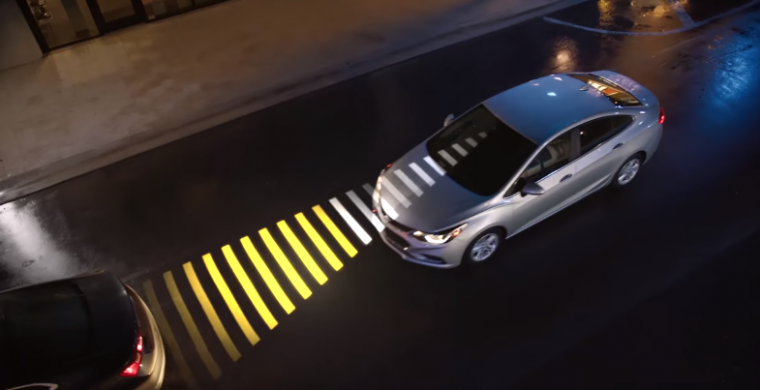New Safety Tech Contributes to Poor Driving Habits

Chevrolet’s forward collision technology
Photo: Chevrolet
Earlier this fall, we discussed how many drivers owned vehicles with advanced safety features but didn’t understand how the technologies worked. Even if you know how to use the features correctly, however, it’s easy to develop an overreliance on these features.
According to WRIC, these features might be one factor in poor driving habits. The majority of drivers (80 percent) don’t understand the limitations of blind spot monitoring technology and rely solely on that when changing lanes. However, even this function his its limits, as Martha Meade, the government affairs and public relations manager for AAA Mid-Atlantic, articulates. “[Blind spot tech] can’t alert you to cars going extremely fast beside in your blind spot. And not always pedestrians or bicyclists.”
Opt for Older: Used vehicle advantages
Per AAA, 25 percent of drivers with rear cross-traffic alert features don’t double-check before backing up. And 29 percent of drivers admit that they engage in other activities while driving when the adaptive cruise control function is turned on.
The worry is that advanced safety features will foster a false sense of security in drivers, which in turn, will result in distracted driving. It’s important to remember that technology supports us human drivers, rather than replacing us, as Meade put it.
As helpful as driving assist features can be, they’re no substitute for focusing on the road and paying attention to your vehicle’s surroundings at all times. Just a reminder to stay undistracted while driving this holiday season, even if your vehicle has the latest safety tech to make the task of driving a bit easier.
Buyer’s Dilemma: Find out which Chevy suits you best
News Sources: WRIC.com, HealthDay, AAA

The News Wheel is a digital auto magazine providing readers with a fresh perspective on the latest car news. We’re located in the heart of America (Dayton, Ohio) and our goal is to deliver an entertaining and informative perspective on what’s trending in the automotive world. See more articles from The News Wheel.


